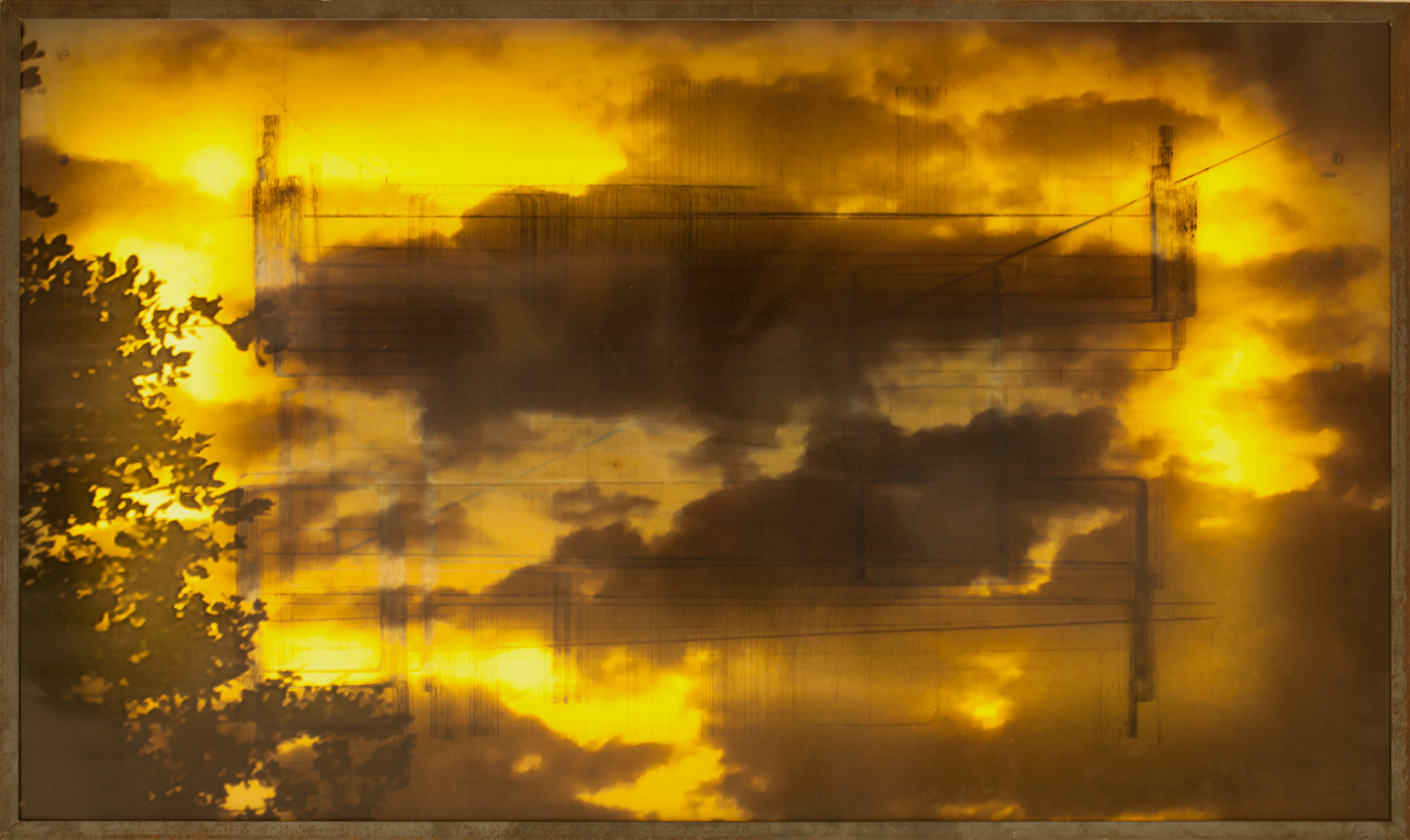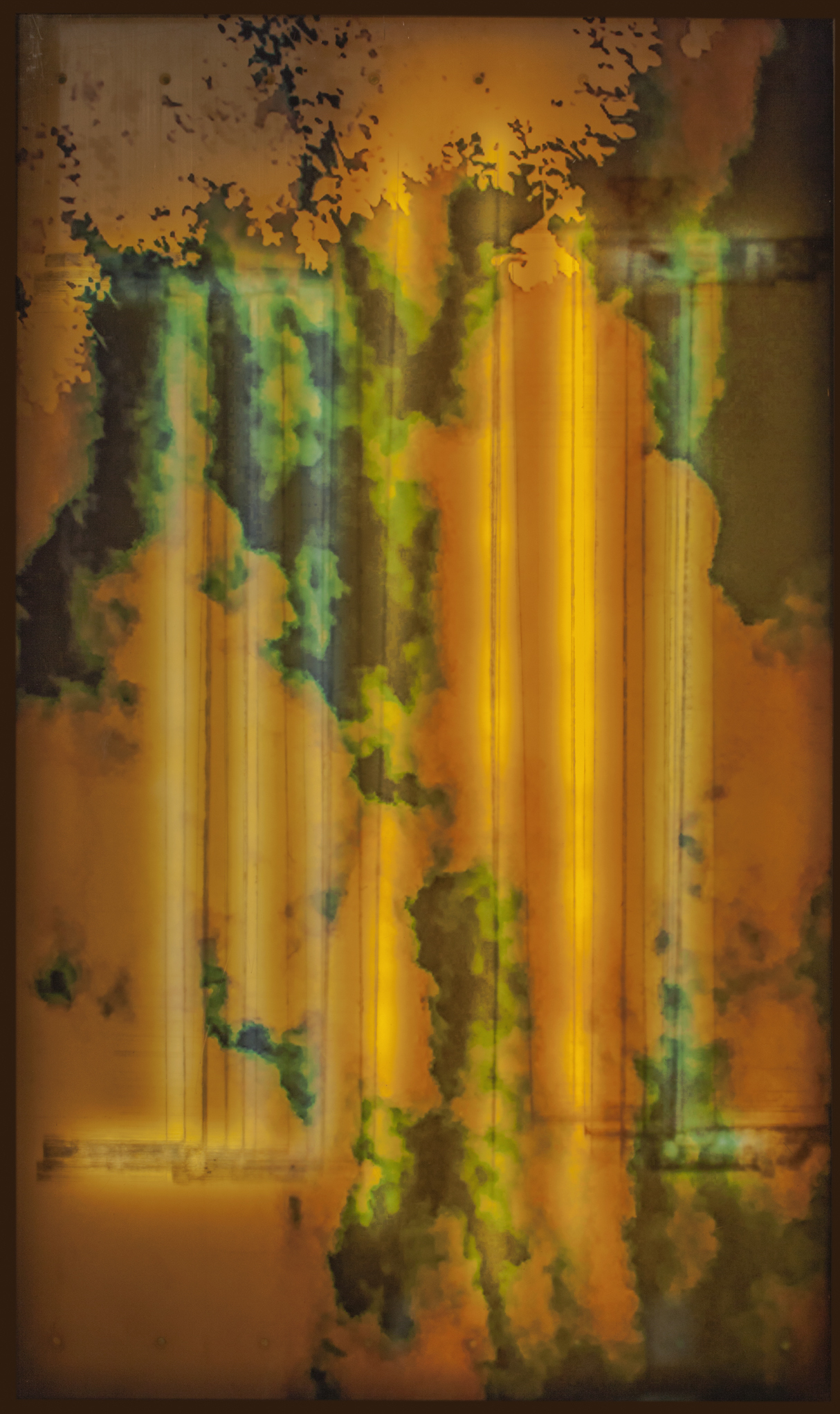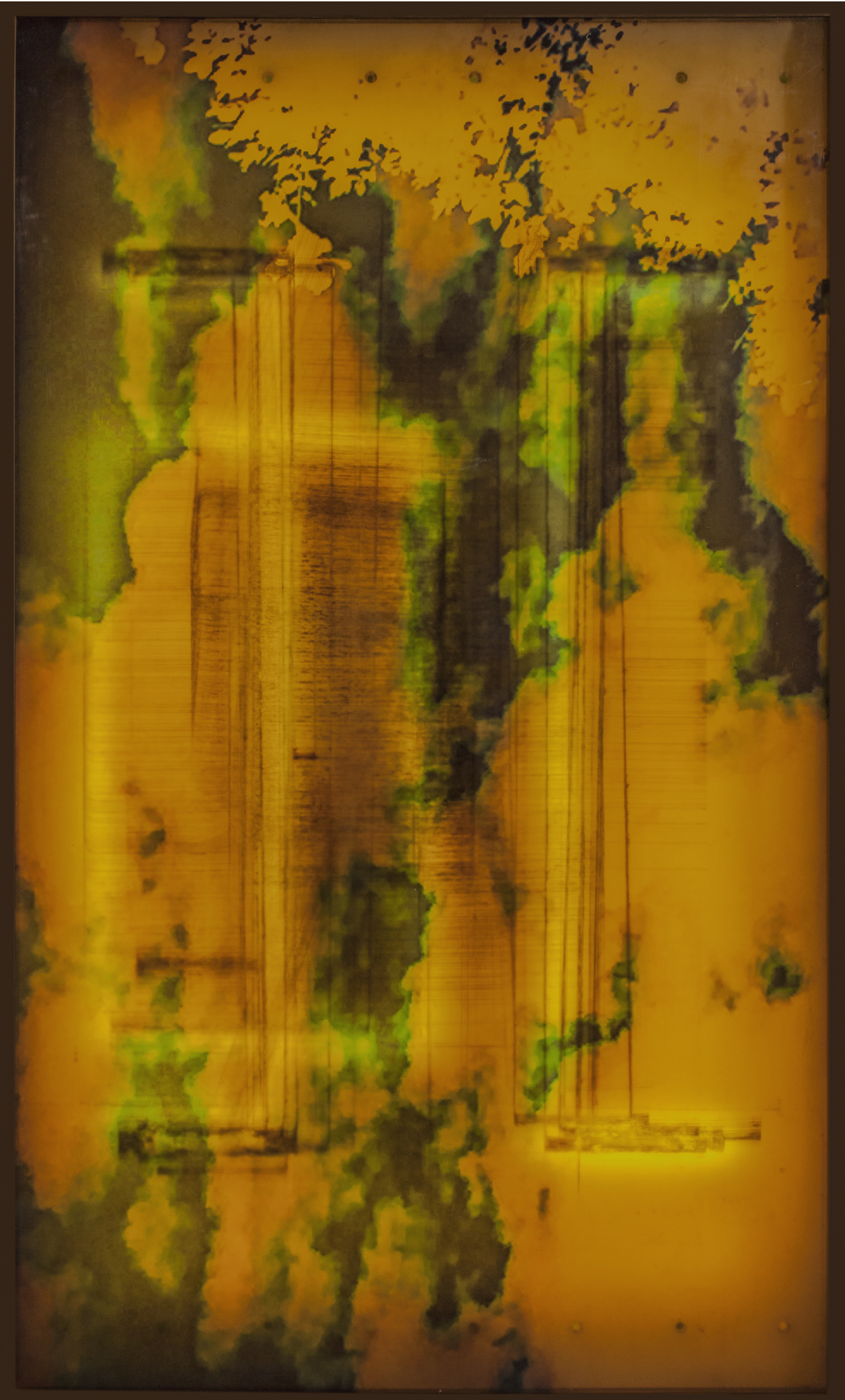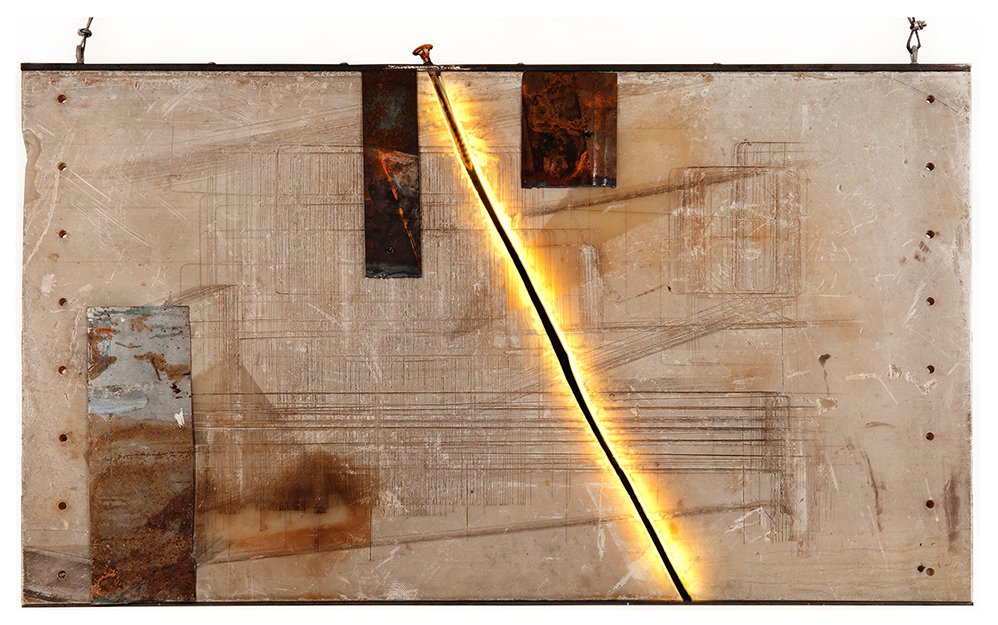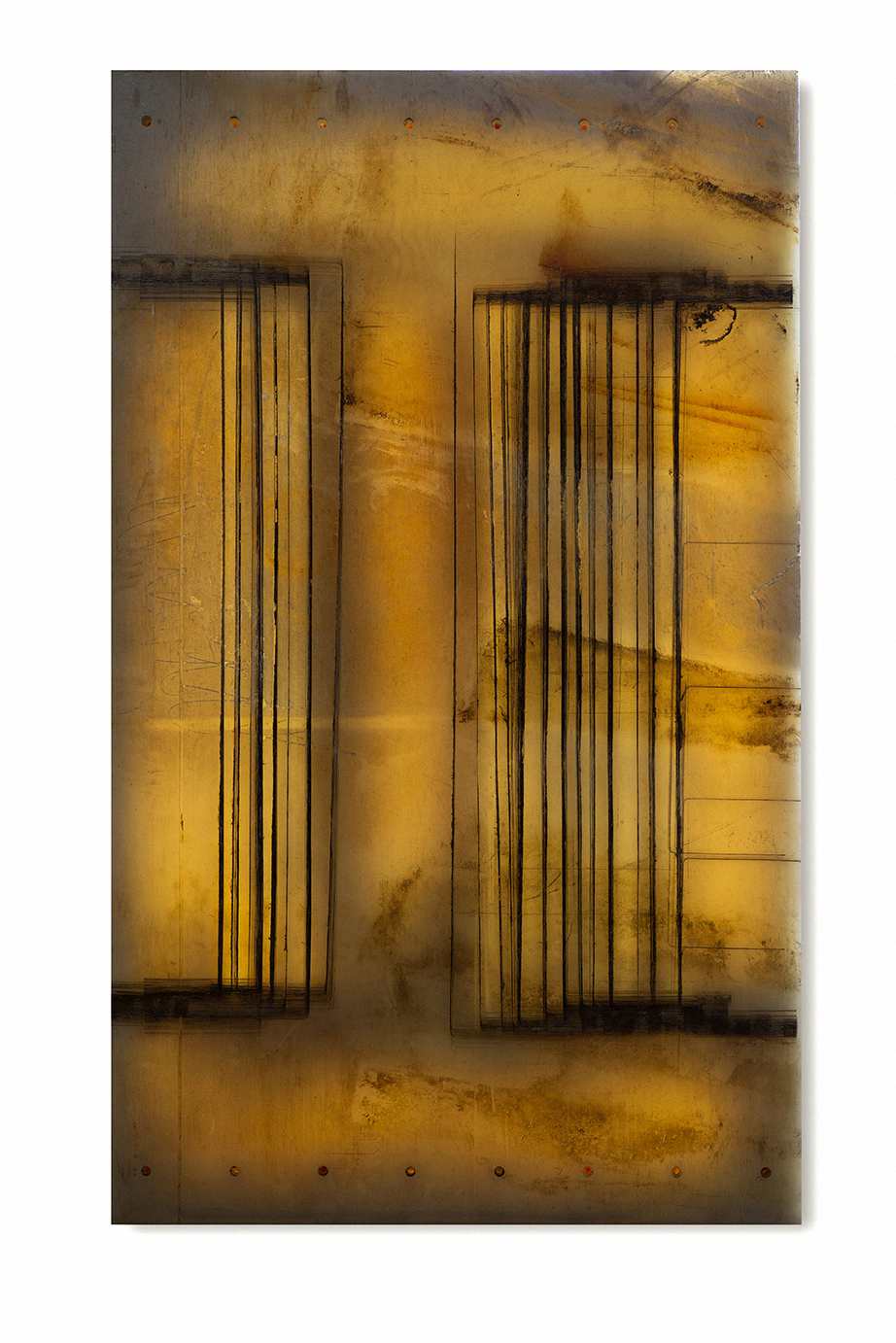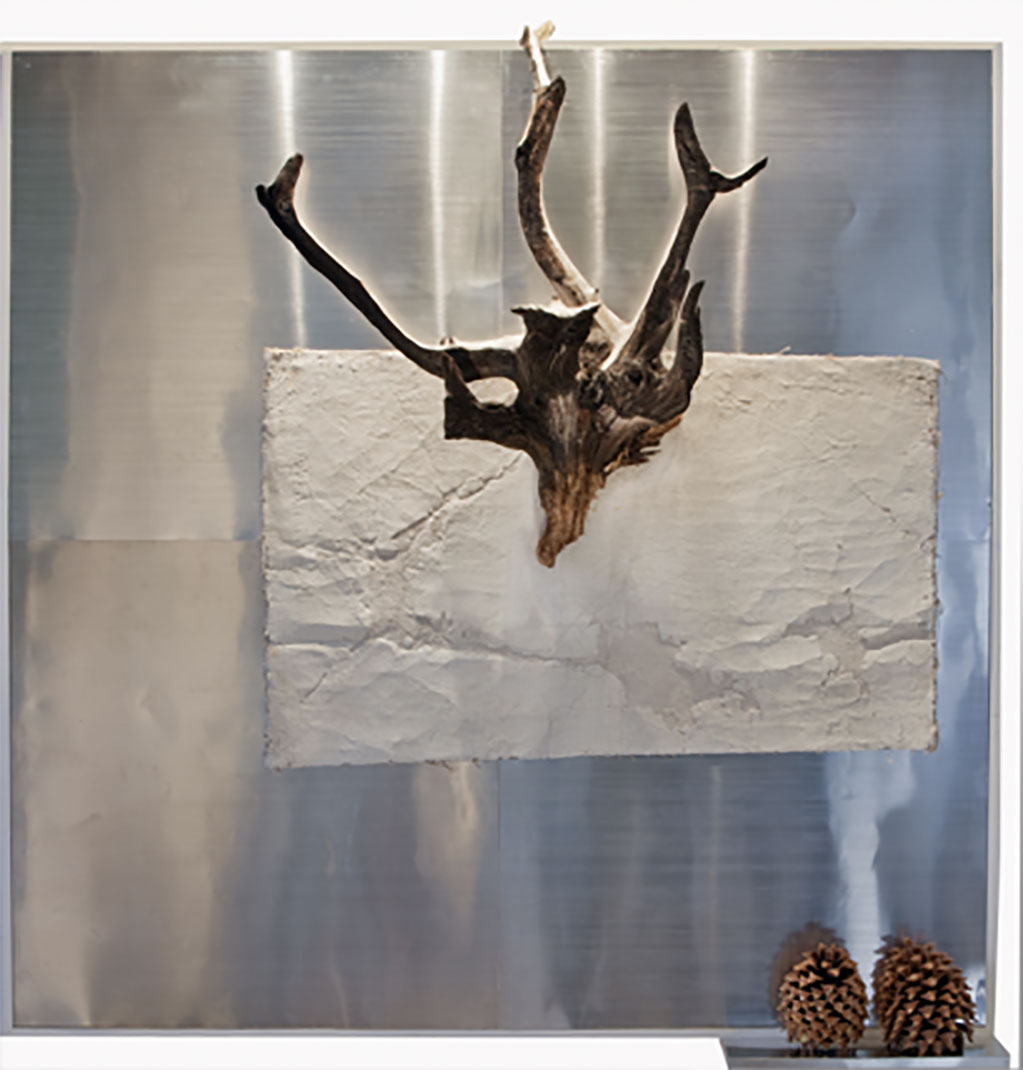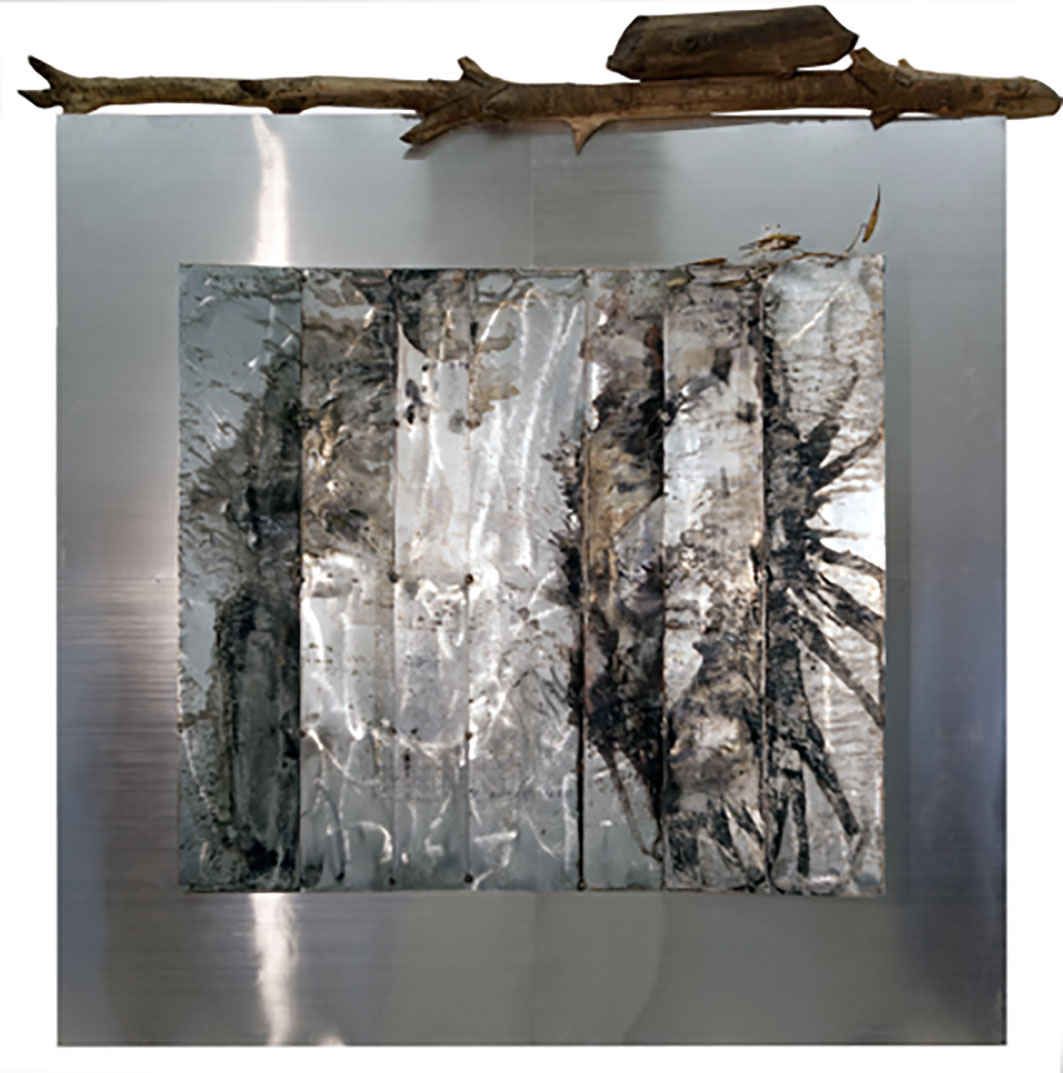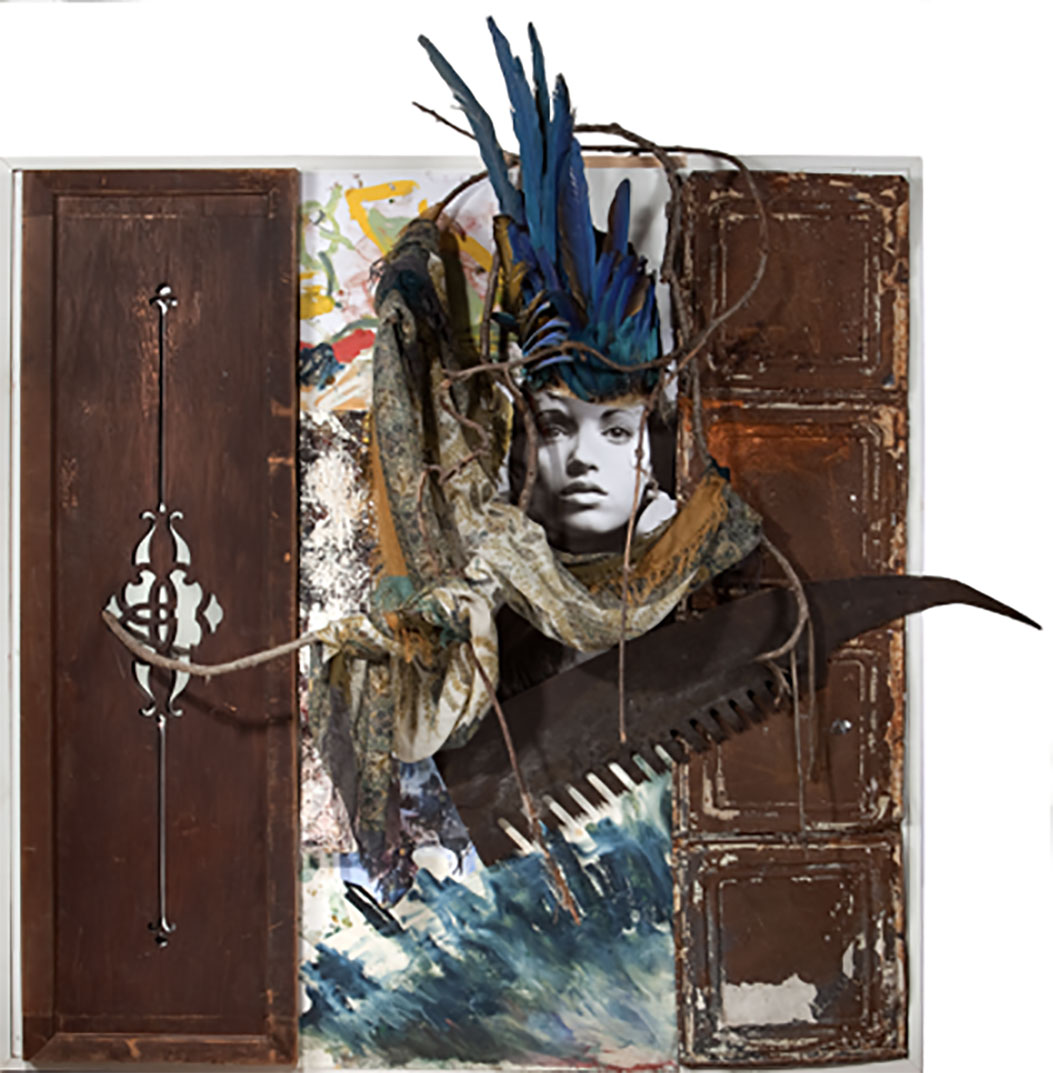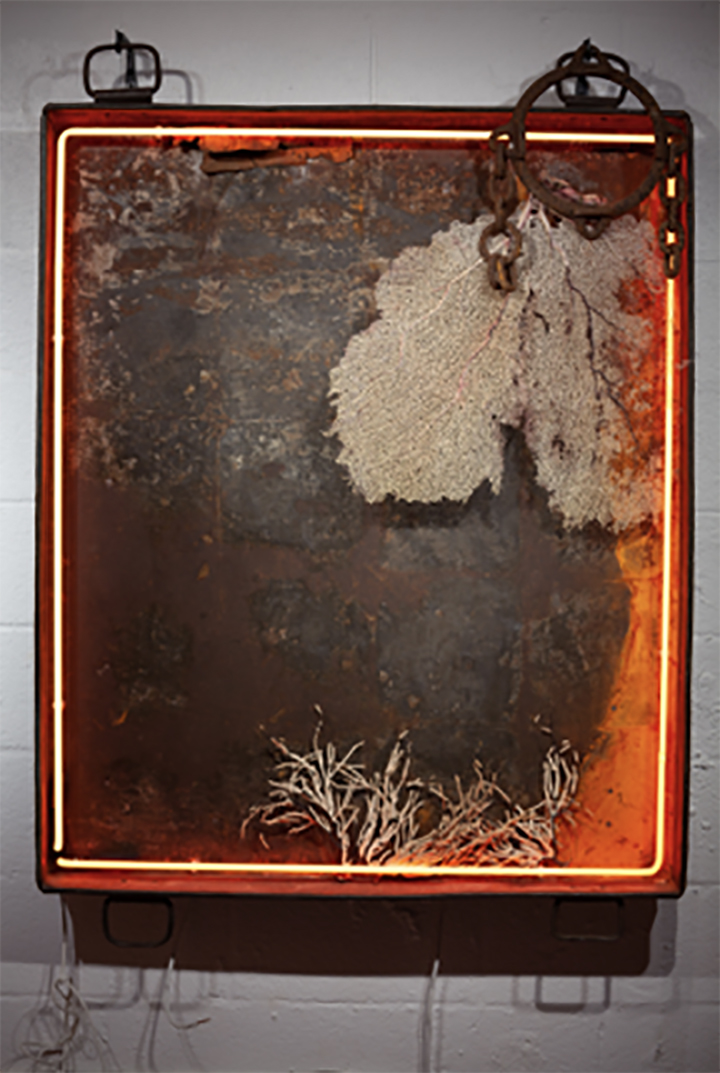Artworks / Sculptures / Relief Sculptures
ASSEMBLAGE
Medium-format resin based layered light boxes that are made from repurposed discarded skylights she found at a junkyard, converted by her into back lit poetic layered intervened landscapes while at the same time she explores the life of objects. Also, the concept of light and landscape, rooted in the daily act of looking throughout the window are along time play an important role in bringing together things from the past and present in a single plane.
In her current works, Sandra Muss explores the relationship between landscape and architecture through exercises in painting, installations and sculptures. Her two-dimensional collages and assemblages have grown into full-sized sculptures that reflect her understanding of the world as a united entity in which all differences are welcome. Her approach to art is both spiritual and adventurous as seen, for example, in one of her most recent pieces –still a work in progress— which depicts a Corinthian column’s capital and shaft holding about thirty discarded bakery trays that were previously used for leavening bread, are placed in a way that creates an illuminated rhythmical sequence, distributing dim light onto the empty corners. Seen from above, the shape of the corners of the overlapped trays forms a multi-pointed star that could be Jewish, Muslim or Christian in origin. Another oversized rusted door that has been exposed to years of inclement weather holds antique clock covers, also rusted, creating a perfect abstract assemblage that evokes the purity of geometrical forms, in this case, the squares and abstract shapes, along with the half circles.
In general, her practice draws from a variety of sources inspired by nature and spiritual forces and include everything from traditional art materials to recovered, rusted architectural objects, and natural elements such as rocks, leaves, moss, feathers and shells. She combines traditional painting and collage methods with unusual materials to produce complex installations that include neon signs and, recently, incorporate acoustic features. Muss works in both, bi- and tri-dimensional surfaces to connect these imaginary portals or thresholds that enable humans to enter metaphorically into other spaces or dimensions. Mainly interested in the circulation and human intervention in nature, her practice revolves specifically around an imprecise yet firm connection between the sacredness of nature and the humanistic, spiritual experience. These opposite combinations are reflected in works that often juxtapose opposite ideas such as the human-made versus the natural, permanence and impermanence, and as an undercurrent, the passage of time.

